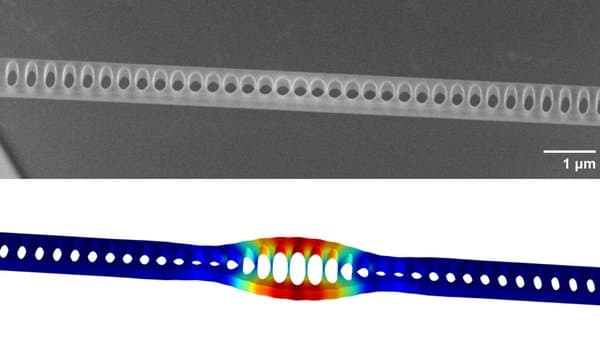NIST Devises Highly Accurate Quantum Thermometer
A group of scientists from the National Institute of Standards and Technology (NIST) has found a novel approach to calibrate thermometers by applying the bizarre principles of quantum mechanics. While contemporary thermometers may produce an erroneous result, the new method talks about a viable quantum measurement system where changes in physical characteristics correspond to radiated thermal energy from the object under investigation.
Scientists studied the vibrations of a small transparent beam of silicon nitride using laser light where the intensity of vibrations are proportional with to the warmth of the object. In order to minutely study the behaviour, the team incorporated a tiny reflective cavity inside the beam. When the laser light is incident on a crystal, it experiences small shift which results in vibration signals which eventually change colour depending on time. A comparative study of the relative size of the thermal vibrations and the quantum motion could determine the absolute temperature.

Electron micrograph of the silicon nitride beam
The intrinsic quantum fluctuations however generate indistinct signals with respect to other thermal energy induced noise signals. But with the help of the new method, quantum and thermal fluctuations were segregated from each other. Tom Purdy, a physicist from NIST's Physical Measurement Laboratory explained that their research connected quantum mechanical fluctuations with physical thermometry. The team’s result will be reported in American Physical Society’s March meeting.
Source: #-Link-Snipped-#
Scientists studied the vibrations of a small transparent beam of silicon nitride using laser light where the intensity of vibrations are proportional with to the warmth of the object. In order to minutely study the behaviour, the team incorporated a tiny reflective cavity inside the beam. When the laser light is incident on a crystal, it experiences small shift which results in vibration signals which eventually change colour depending on time. A comparative study of the relative size of the thermal vibrations and the quantum motion could determine the absolute temperature.

Electron micrograph of the silicon nitride beam
The intrinsic quantum fluctuations however generate indistinct signals with respect to other thermal energy induced noise signals. But with the help of the new method, quantum and thermal fluctuations were segregated from each other. Tom Purdy, a physicist from NIST's Physical Measurement Laboratory explained that their research connected quantum mechanical fluctuations with physical thermometry. The team’s result will be reported in American Physical Society’s March meeting.
Source: #-Link-Snipped-#
0
